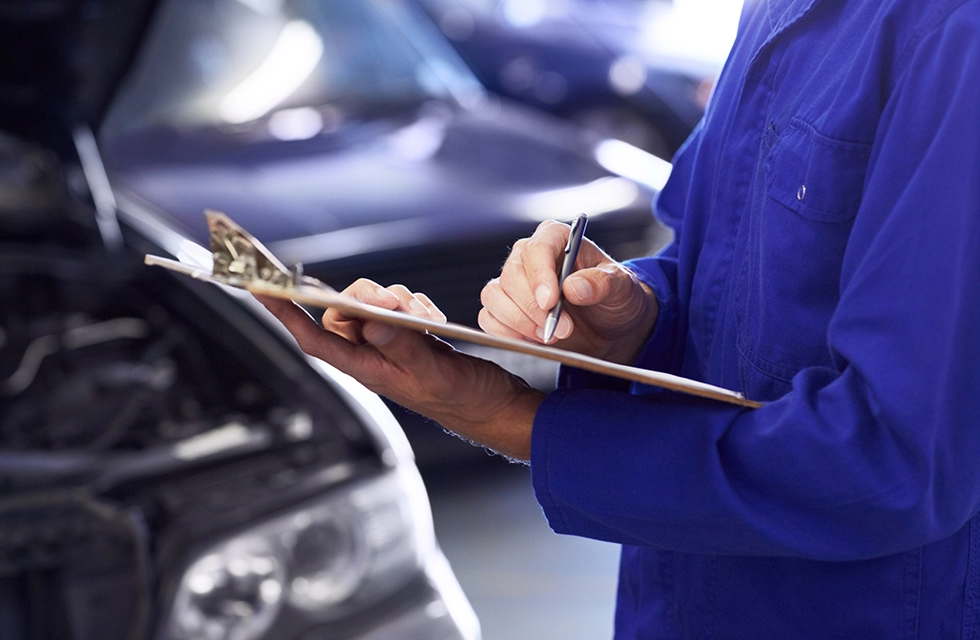Drive Train Service in Troy at Auto Lab Troy
August 10, 2020
The drive train in your vehicle includes all the components that transfer power from the transmission to the wheels. Those components differ depending on what type of vehicle you drive, namely, front-wheel drive, rear-wheel drive, all-wheel drive or four-wheel drive. The preventive maintenance your driveshaft needs will also differ by what type of vehicle you drive.
Let's start with front-wheel drive. In this vehicle, the transmission and the differential are combined in one component, known as the transaxle. The transaxle is connected to two half-shafts (axles), which are then connected to the wheels with a constant velocity (or CV) joint, which is protected by an airtight rubber boot.
Auto Lab Troy service for this type of driveline includes servicing the transaxle and inspecting the CV boot. If the boot is damaged, the CV joint will need to be inspected, and the boot will need to be replaced. If you hear a clicking noise in your wheel wells when you turn, you may have a damaged CV joint. A damaged CV joint should be replaced.
Rear-wheel drive vehicles generally have a transmission in the front of the car and the differential in the back. A driveshaft (it looks like a long tube) connects the transmission to the differential. Some vehicles may have a two-piece driveshaft, which are connected to the differential with universal joints or U-joints. Again, the differential is connected to two half-shafts that go out to the wheels.
Auto Lab Troy service on the drive train on a rear-wheel drive vehicle starts with servicing the differential. It will need its fluid drained and replaced regularly. The seals on the axles should also be inspected for wear or leaks. Leaking or damaged seals may mean the axle needs to be serviced as well. Also, U-joints can wear out. If you hear clunking or feel a jolt when you shift into drive or into reverse, it could indicate a driveline problem.
All-wheel drive vehicles provide power from the transmission to all of the wheels, instead of just to the front or rear. The advantage is that the vehicle can adapt to different driving conditions and transfer more power to the front or back wheels as needed. The disadvantages are that the driveline is more complicated, and the vehicle weighs slightly more.
Many all-wheel drive vehicles are based on a front-wheel drive set-up. They also have a differential in the rear and one in the center of the vehicle that allows power to transfer to the front and rear. A shaft runs from the transfer case to the center differential, and another from the center differential to the rear differential.
Servicing an all-wheel drive at Auto Lab Troy involves servicing ALL of the differentials and inspecting the joints and seals for wear, leaks or damage.
Four-wheel drive vehicles are rear-wheel drive vehicles that have an option to transfer power to the front wheels. In other words, they can be driven as either rear-wheel or four-wheel drive vehicles. These vehicles are specifically designed for the harsh driving conditions Troy drivers encounter off-road. The driveline in a four-wheel drive vehicle is similar to that of an all-wheel drive vehicle. The center differential, however, is a transfer case. Maintenance requires servicing both of the differentials and the transfer case, as well as an inspection of the joints and seals.
Troy auto owners would be wise to check with their owner's manual for recommendations on how often to service their vehicle drive train. It's also good auto advice to check with your friendly and knowledgeable Auto Lab Troy service advisor as well. You may live in an area in Michigan where weather or driving conditions require more frequent servicing of the drive train.
Good car care at Auto Lab Troy in Troy always includes taking care of your driveline. Without it, your vehicle becomes a very large paperweight.
Auto Lab Troy
2790 West Maple Rd.
Troy, Michigan 48084
(248) 643-7690
Need Service?
More articles from Auto Lab Troy

It's (Not) Complicated (Engine Air Filter)
December 22, 2024
While many components of your vehicle are complex and composed of lots of mechanical and electrical parts, there's one that isn't complicated but still important. It's your engine air filter. (And, we should point out, the engine air filter isn't to be confused with the cabin air filter. The ca... More

Putting a Stop to Brake Problems (Brake Service)
December 15, 2024
It's safe to say that most drivers take their brakes for granted. You press on the brake pedal and the vehicle slows down or stops. It's easy to see why it is so important for your vehicle's brakes to be working correctly. Brakes are an important safety feature of any vehicle. When it comes to... More

Why is Air Not Coming Out of My Vents?
December 8, 2024
You climb inside your vehicle, start the ignition, and reach for the fan control for the heating or air conditioning. But when you try to crank it up, no air comes out of the vents. It can make for a very uncomfortable trip, whether its hot or cold outside. Its important for the comfort of you a... More










